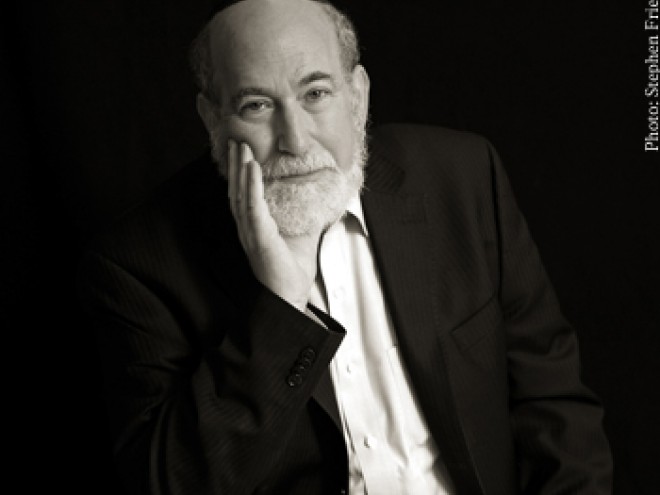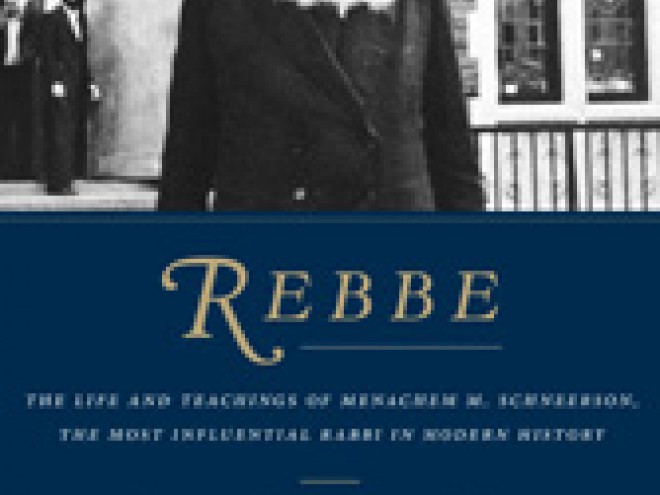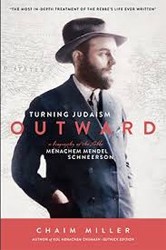Rabbi Joseph Telushkin’s biography of the late Lubavitcher Rebbe, Rabbi Menachem Mendel Schneerson (1902−1994) is a well-crafted, well researched, and well written portrait of the most influential rabbinical leader in modern times. Based on extensive interviews, access to the Rebbe’s correspondence (of ten thousand letters), his voluminous discourses (in two hundred volumes) faithfully committed to writing by his followers, videos, tapes and other archival material, Rabbi Telushkin provides an inside look at this initially reluctant leader who galvanized a Hasidic sect into a global powerhouse, bringing Judaism to the far-flung corners of the globe by the sheer force of his personality.
Although not a Lubavitcher hasid himself — nor is Rabbi Telushkin— Telushkin’s father was the accountant for the Rebbe and his father-in-law, the previous Rebbe, and his grandfather was a venerable intimate of both rebbes, a legacy that granted him unfettered access and cooperation — and independence. It is a very sympathetic, perhaps even partisan biography, but it steers clear of the hagiographic aspects that have rendered similar works less reliable.
We learn about the life of a brilliant and pious rabbinic scholar who was intent on pursuing a career as an engineer. While pursuing his studies in Berlin and Paris, the Rebbe drew closer to his father-in-law, the sixth Lubavitcher Rebbe, and became his assistant when they came to America. Although he had assumed greater and greater responsibilities as his father-in-law grew ill, Rabbi Schneerson, who worked for a while at the Brooklyn Navy Yard during the war, had no intention of becoming the next rebbe.
Telushkin pieces together data showing how the groundswell of support from around the world eventually projected Rabbi Schneerson, almost against his will, to accept the mantle of leadership, which he did in 1951, one year after his father-in-law’s death. Once installed as Rebbe, Rabbi Schneerson sought to utilize American technology and culture to reach out to Jews wherever they might be to bring them closer to Judaism. Unlike most Hasidic sects, which tend to be more insular, Lubavitch, also known as Chabad, is characterized by their outreach to non-observant Jews. The Rebbe created an army of emissaries and sent them (with a one-way ticket) all over the world to establish outposts of Judaism: schools and synagogues. He sent them to college campuses as well.
Each of the book’s thirty chapters chronicles a different aspect of the Rebbe’s life, teachings, influence, and positions on a wide range of subjects. We come to learn of the incredible breadth, depth, and scope of his knowledge in so many disciplines. We are awed by his work schedule, discipline, and adherence to his stated goals. There is a good reason why presidents, prime ministers, generals, scientists, politicians of all stripes, world leaders, diplomats, Conservative and Reform rabbis, writers, and of course his Hasidim, sought his advice. His private meetings would often last until dawn.
Although Telushkin does not shy away from some painful internecine issues, there is little discussion about any of the disagreements with Satmar or with some of the major rabbinic leaders and yeshiva deans on a wide range of topics, not the least of which concerned his purported Messiahship.
He was the only leader of a major Hasidic group with a university education, yet he discouraged his followers from attending college. His understanding of military tactics and history awed every Israeli Chief of Staff from Moshe Dayan to Arik Sharon. How did one man go about energizing Jewish life and achieve so much? There are currently four thousand couples promoting Judaism in eighty countries in over one thousand communities, two hundred campuses, and in forty-eight states; fifty to sixty thousand people still visit his grave on the anniversary of his death. Education Day in the U.S. is the Rebbe’s birthday, by presidential decree since 1977.
The Rebbe early on recognized the power of technology and encouraged its usage to disseminate Judaism. Lubavitch children in places far from Jewish schools get their education online, the Rebbe’s speeches were broadcast world-wide via satellite, and in Los Angeles the Lubavitch conduct a major telethon each year with many Hollywood stars in attendance. The Chabad approach to outreach has resulted in their uncanny ability to generate donations from non-Orthodox Jews. Although no successor has been designated, the two decades since the Rebbe’s death have seen exponential growth of the Lubavitch movement to carry out the Rebbe’s wishes.
This book is a fitting ode and panegyric to a great man. It is by far the best biography of the Rebbe available.
Related content:
- Interview with Rabbi Joseph Telushkin
- The Rebbe: The Life and Afterlife of Menahem Mendel Schneerson by Samuel Heilman and Menachem Friedman
- A House Divided by Matthew Shaer
- Joshua Braff Visits 770




